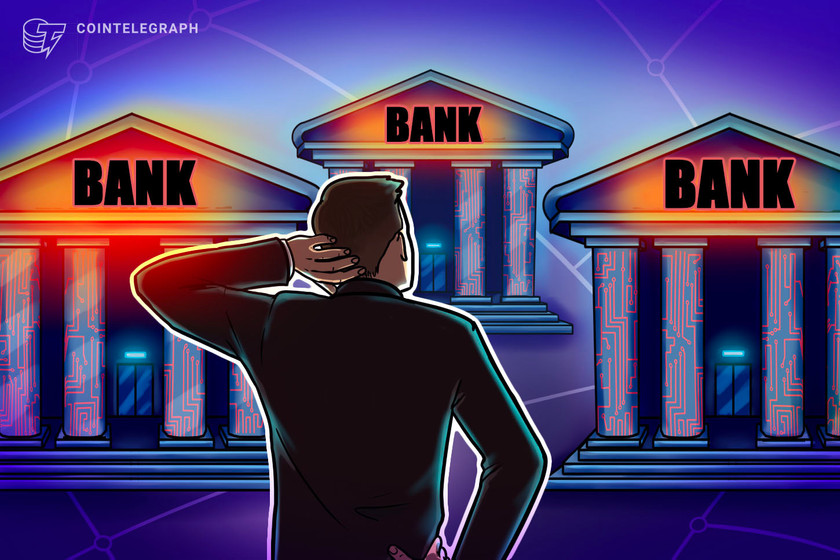My story of telling the SEC ‘I told you so’ on FTX
“I hate to say I told you so” is a phrase oft-repeated but rarely sincere. It’s a delightful feeling to claim credit for warning about a problem in advance. That’s a liberty I’m taking with federal financial regulators at the United States Securities and Exchange Commission.
In January of this year, while serving as a member of the SEC Investor Advisory Committee that advises SEC Chairman Gary Gensler on crypto and other matters, I filed a petition with the SEC. I asked them to open a formal public comment about unique issues presented by crypto and other digital assets. I pointed to crypto custody and intermediary conflicts of interest as key issues the SEC should address.
I called this fresh start a “Digital Asset Regulation Genesis Block” that would help the SEC improve crypto regulation. The SEC aggressively ignored me.
Upon my term ending on the SEC’s advisory committee last week, I took the chance to give Chair Gensler some strong words about his abuse of digital assets. Check out Gensler’s response. pic.twitter.com/3oa5xJU1Ch
— J.W. Verret, JD, CPA/CVA (@JWVerret) March 15, 2022
The SEC and U.S. bank regulators’ failure to adapt rules to crypto intermediaries didn’t directly cause the blowup at FTX. Yet their failure to create working rules for U.S. crypto intermediary exchanges to custody crypto has enabled an environment where scammers like Sam Bankman-Fried could thrive overseas.
Let’s start with the basics. The point of crypto is not to have a new product trade within the traditional financial system. Crypto is a revolution in finance that empowers asset owners.
The point is individuals get the same control over their assets that Goldman Sachs partners enjoy over their assets as they transfer, lend and exchange crypto in a decentralized financial system.
Related: Federal regulators are preparing to pass judgment on Ethereum
Doing that right is an awesome responsibility for new users. It requires knowing something about the smart contract code you’re interacting with, familiarity with cold storage wallets and basic operational security for encryption keys.
The full revolution will take time. The revolution will not be brought to you by JPMorgan (so, don’t buy the JPMorgan Coin). Yet most new users will initially enter crypto through custodial intermediaries that look a bit like traditional financial intermediaries.
Intermediaries that custody crypto for newbie retail users need a rule book to protect customers from conflicts of interest and custody shell games — i.e., the FTX/Alameda playbook. Yet the cookie-cutter application of rules promulgated for paper stock holdings under 1933 and 1934 statutes just won’t cut it.
Federal bank and securities regulators have created artificial frictions for banks and brokers trying to custody crypto assets under existing rules. On the other hand, they insist that federal regulation is essential to protect customers. While crypto exchanges navigated between that rock and hard place created by U.S. regulators, the FTX fraud thrived overseas.
Crypto exchanges need intelligently designed custody rules. While that would not have solved the problems at FTX’s overseas exchange, it would have helped more international retail activity flow into the U.S. instead.
Efforts by existing crypto exchanges to get clarity from the SEC about crypto custody have hit a brick wall. States such as Wyoming developed a path for bank custody of crypto, but the Fed refuses to give those banks access to Fed master accounts.
Related: 5 reasons 2023 will be a tough year for global markets
The Federal Deposit Insurance Corporation informed banks that any efforts to custody crypto will require the bank to explain themselves to their bank examiners. That’s regulator-speak for “don’t touch it.” Many crypto exchange lawyers tell a similar story about applying to the SEC for an alternative trading system license that was slow-walked to death.
We will soon hear regulators complain that if only they had a little more power, and a little more funding, they could protect customers from crypto. That style of illusionist misdirection is no different from Bankman-Fried dodging diligence requests from investors.
Keep your eye on my lovely assistant (not what’s under the table).
Crypto needs protection from the regulators. Innovators in crypto are developing solutions like multisignature wallets and Merkel tree root-based reserve proofing that are light years ahead of customer protections in traditional banking and exchange custody. The fact that Bankman-Fried did not use them does not mean they’re not real.
If the SEC and bank regulators want to be part of the solution, rather than part of the problem, they should do two things. First, start the Digital Asset Regulation Genesis Block process across agencies. Then, when securities and banking lawyers for crypto intermediaries knock on the door with good ideas for how to comply with adapted rules, listen.
J.W. Verret is an associate professor at the George Mason Law School. He is a practicing crypto forensic accountant and also practices securities law at Lawrence Law LLC. He is a member of the Financial Accounting Standards Board’s Advisory Council and a former member of the SEC Investor Advisory Committee. He also leads the Crypto Freedom Lab, a think tank fighting for policy change to preserve freedom and privacy for crypto developers and users.
This article is for general information purposes and is not intended to be and should not be taken as legal or investment advice. The views, thoughts, and opinions expressed here are the author’s alone and do not necessarily reflect or represent the views and opinions of Cointelegraph.









